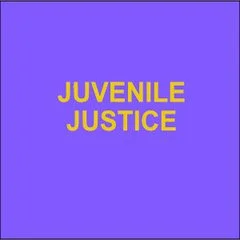By Stephen Case , Kathy Hampson and Andrea Nisbet
This Child First research project was commissioned by the Nuffield Foundation to gain a greater understanding of what children think about their collaboration in youth justice decision-making processes. Participation and engagement of children in youth justice processes and practice is vital, particularly since the Youth Justice Board’s adoption of Child First justice as its guiding principle and key strategic objective. Child First is an evidence-based framework for working with children incorporating four tenets: see children as children; develop pro-social identity for positive child outcomes; collaboration with children and promoting diversion away from the justice system. The focus for this project is the third tenet, ‘collaboration with children’. Purpose Children’s voices have traditionally been neglected within youth justice policy, practice and research, which have mainly been undertaken and developed by adults for adults. Consequently this project sought to readdress this imbalance with its child-focus of facilitating children to share their genuine perspectives and experiences of their involvement in decision-making processes. The study explored children’s collaboration in decisions affecting them at allstages of the Youth Justice System and focused on four interconnected research questions relating to: collaboration understandings, collaboration objectives, collaboration effectiveness and collaboration practise development. Methodology The qualitative methodological framework of Participatory Interpretivism was chosen, which prioritises coconstructing the research with justice-involved children to ensure child-centric, Child First, co-creation of all research elements. Two different sample groups of justice-involved children were identified from a range of community and custodial settings, in order to address the research questions through participatory and cocreated methods and analyses: Project Reference Group (PRG) of justice-experienced children (n= 22) collaborating together with researchers throughout the life of the project to co-create the project design (including exploring creative methods), implementation processes and interpretation of findings, recruited from one hosting Youth Justice Service (YJS). Research Participant Children (n = 66) recruited from six geographically and institutionally diverse research sites to take part in system journey interviews and complete digital/paper diaries for reflecting on involvement within- and between-stages of the Youth Justice System (3 x youth justice services, 2 x youth offending institutions and 1 x secure children’s home).
Summary of Findings and Discussion Findings provided a rich description and interpretation of children’s views from the PRG sessions and interviews undertaken with participant children at the research fieldwork sites. PRG session observations highlighted the development of the project methodology throughout the fieldwork to: ✓ ensure child-friendly, child appropriate ways of communicating with children about the research concepts and questions ✓ trial creative activities/methods to neutralise power dynamics and encourage engagement ✓ interpret research findings from the participant sample to provide an opportunity for children to discuss, challenge and validate emerging themes and sub-themes ✓ disseminate research findings – children chose a pre-recorded rap backing track and, using quotes from participants and their own words, recorded a full rap song in a professional studio. Participant children sample findings in relation to the research questions: ✓ identified what children considered to be the essential elements of ‘collaboration’, summarised as being encouraged to engage in respectful conversations, being spoken to appropriately, being provided with clear information and having their views considered and taken into account ✓ revealed that children wanted professionals to ask them about their aspirations, listen to what they were saying and offer support to help them to achieve their goals so they could move forward with their life ✓ indicated that effective collaboration practice needs to be based around building authentic, positive, nonhierarchical relationships with professionals who cared about them, in a comfortable environment, to facilitate the development of effective and relevant support ✓ identified the main areas for practice development which they believed would improve Child First practice as: o wanting professionals to listen to children and their ideas for improvement o acknowledging and breaking down power imbalances by creating child-friendly environments o keeping children continually informed throughout their involvement with youth justice agencies o involving children in decision-making about them at both strategic and practice levels to benefit their experience and improve outcomes across the whole of the Youth Justice System. Furthermore, findings revealed that children’s experiences of Child First collaboration practice are inconsistent, with some parts of the Youth Justice System better than others. For YJSs, collaboration experiences were generally positive; within custody, it varied depending on the establishment and incentive scheme level; whilst interactions and engagement with the police, courts and children’s social care services were mostly negative. A discussion of the findings provides an overview of the main themes/sub-themes developed and an exploration of how they consolidate and extend existing knowledge related to children's collaboration and youth justice decision making and children's views of effective youth justice collaboration practice.
Loughborough, UK: Loughborough University. 2024. 130p.











